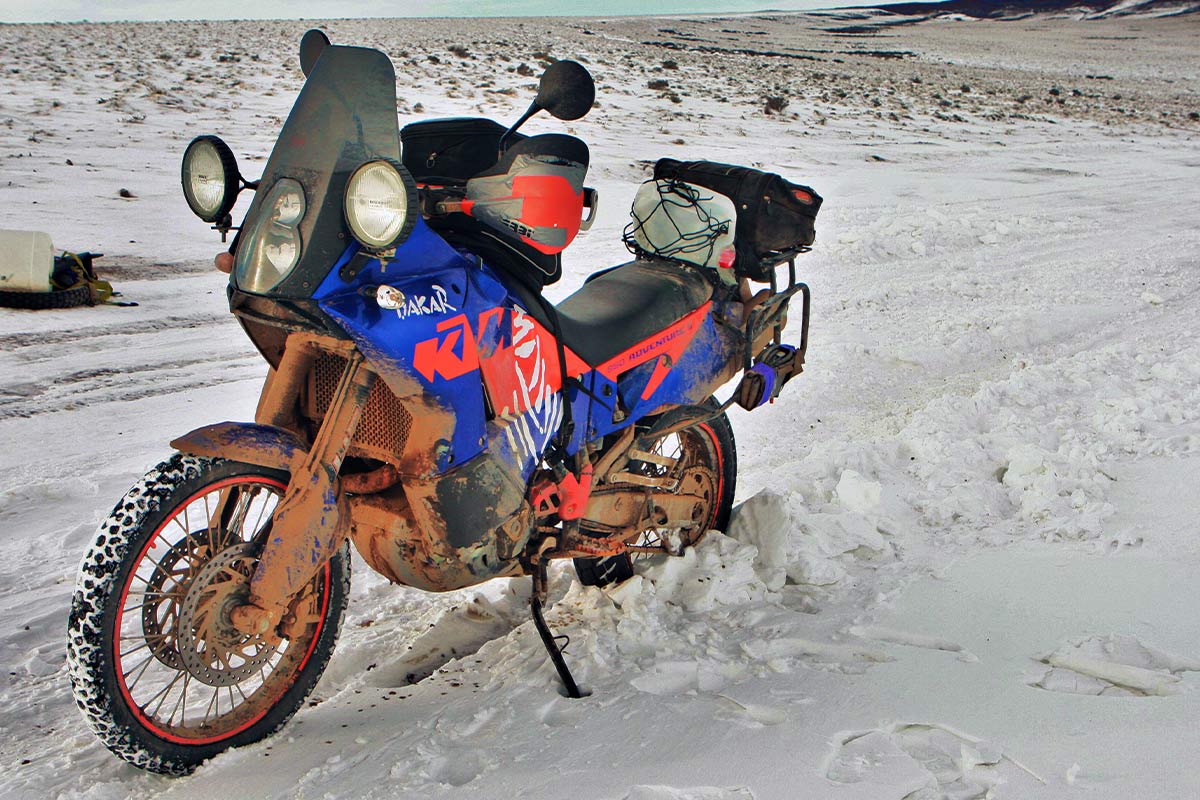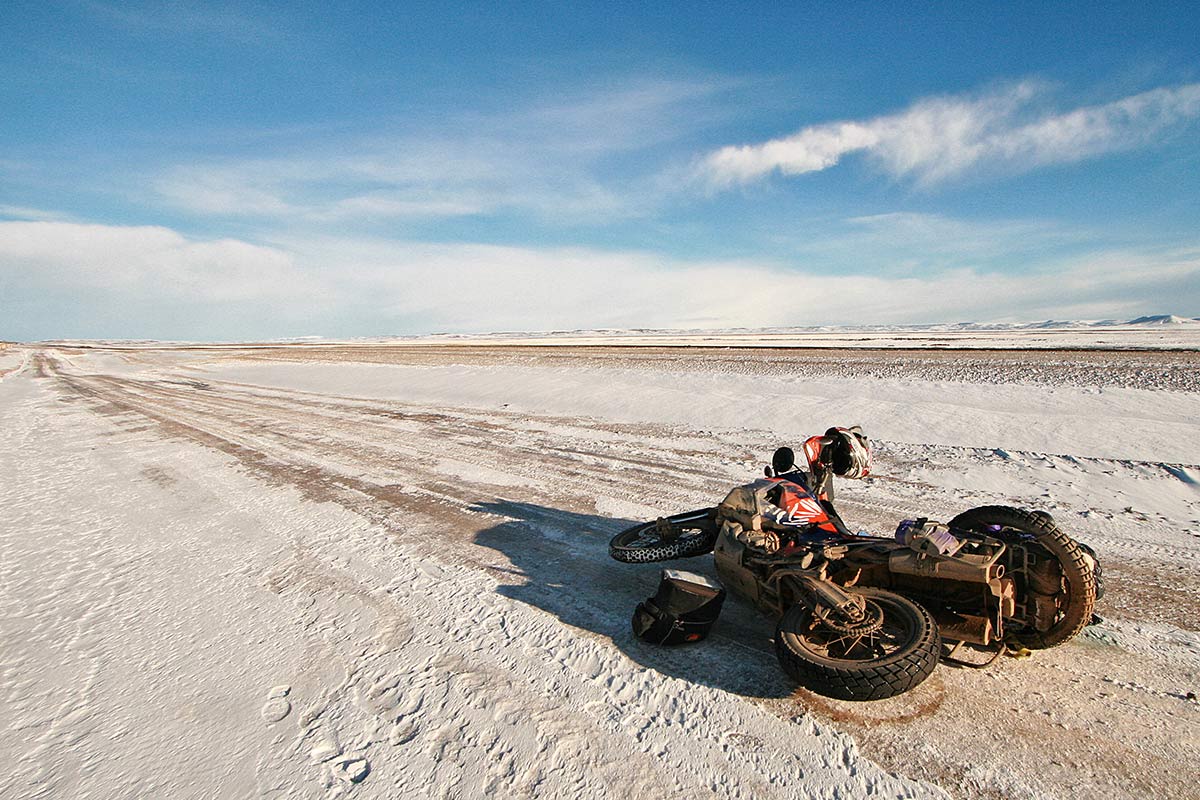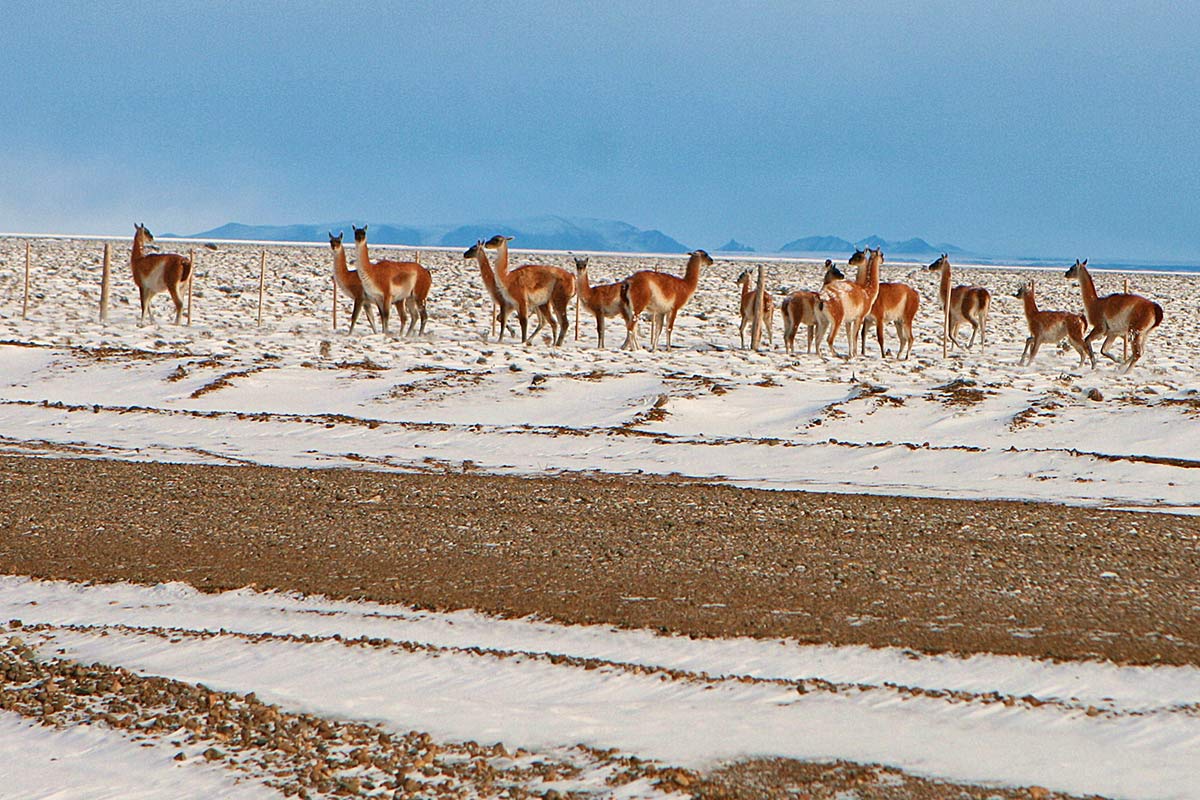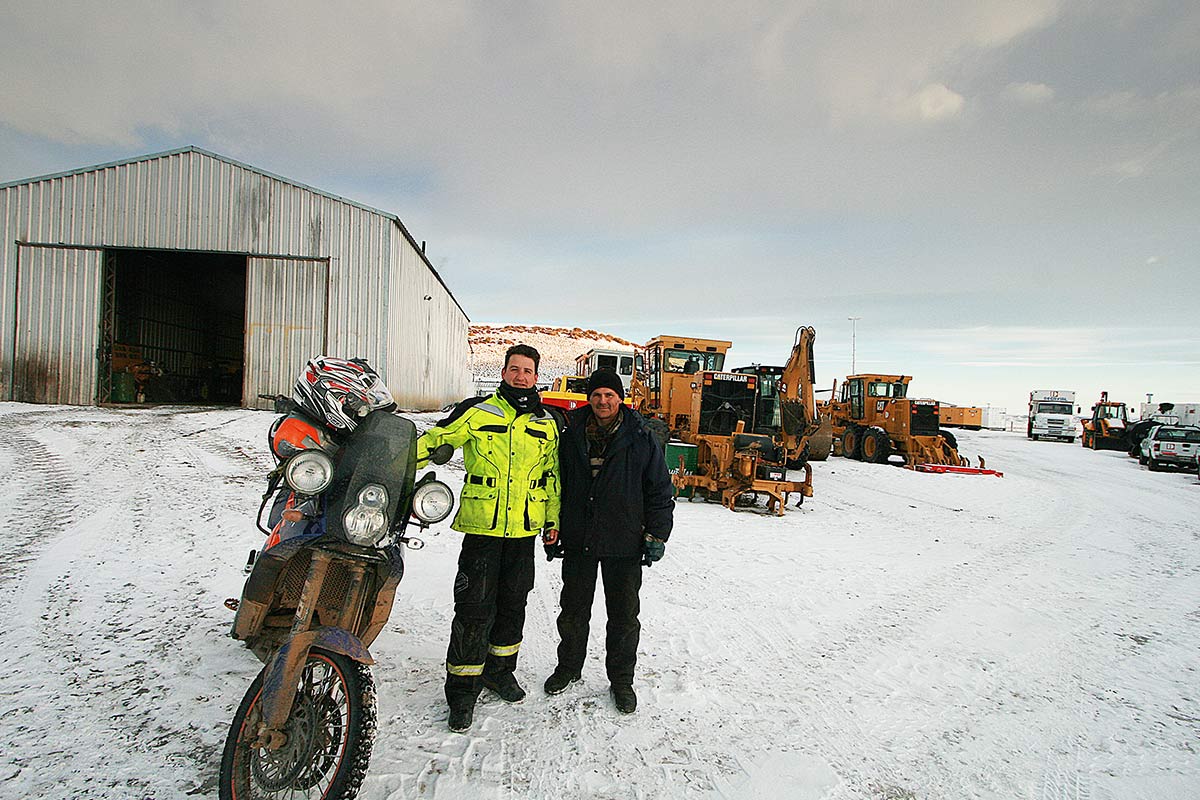Written by and Photos by Fabian Borrero. Posted in Rides
Traveling solo by motorcycle for several months is without a doubt a journey for which one must be prepared to confront challenges and overcome unforeseen hardships.
One of the greatest trials of my 2010 journey took place in Patagonia during the depths of winter. My KTM and I endured temperatures as low as -15°C, which obliged me to acquire high mountain clothing in order to deal with this horrendous cold, made even more intense by the fact I was traveling by motorcycle, which easily doubled the wind-chill factor.
Bundled up with six layers of thermal clothing so limited my body's movement that I felt like a robot. Under my already thick motorcycle jacket was a thermal undershirt, a polar stretch jacket, a Polar 200 jacket, a down jacket, and a windbreaker. And, my lower extremities were covered with a similar assemblage, including two pairs of very thick socks.
I also bought ski gloves and, thank goodness, I'd already equipped the motorcycle prior to the journey with large wind deflectors on the handlebars as well as handgrip warmers. Even so, I felt cold, but at least no longer felt the sensation of freezing experienced during the days prior to arriving in San Martin de los Andes, where there was no city in which I could have obtained technical equipment for these conditions.
After traveling along the southern highway in Chilean Patagonia, I reentered Argentine Patagonia in order to continue southward. I've ridden snow and ice on several occasions, which made me believe that I had the hang of it, and so was no longer afraid of conditions like these. However, when I got to the town of Bajo Caracoles, everything changed.

The temperatures had stayed below zero for weeks, and a layer of ice several meters deep had penetrated the dirt road. Scarcely five kilometers from my point of departure, I went into a skid and was dragged along the ice for the first time on the journey. Luckily, the fall happened at a speed of only 20 kph, and aside from a good bump, I suffered no Injuries.
At this moment, I had no crampons for my motorcycle boots, so my main worry was how I was going to be able to lift the bike from a surface that was more suited for ice skating and all but impossible to stand up on. In any case, I had no alternative other than to try, or risk not being able to get out of there since winter traffic on this stretch of Route 40 south was virtually non-existent.
So, I unloaded all of the baggage in order to reduce the weight and attempted unsuccessfully to stand the bike up. Worn out and frustrated, I sat down to think. It occurred to me that if I dragged the bike along the ice to a patch where there would be a little accumulated snow, perhaps I could manage to get the wheels anchored, which would enable lifting the bike. I tried, and with a lot of skillful maneuvering, a bit of luck, and an hour and a half, I finally managed to upright it.
After reloading the bike, I continued on my way. However, the conditions remained impossible. The bike was skidding constantly, and an extremely strong wind sent me from one side of the road to the other.
When I got to a downward slope of ice and, in order to avoid increasing my speed, I braked, the bike immediately spun around like a top, and I was once again on the ground.

Because of the slope, I knew that it would be much more difficult than for the first fall. By now, it was three o'clock in the afternoon and I had traveled only 50 kilometers in six hours. The slippery and windy conditions would not allow me to go more than 12 kilometers per hour. And, I had yet to advance 250 kilometers in order to make it to the next town.
To add to my concerns, the daylight was only going to last a couple more hours. With neither tent nor sleeping bag to deal with the -20°C below zero temps, the only thing to do was to go back the way I had come.
From the fundamental instinct to survive, I drew the strength and courage necessary to hoist the bike upright. And, after three more energy-zapping attempts, finally succeeded. My attention now shifted to the problem of backtracking. After another hour, I managed to reach the top of the slippery hill.
Since it had taken close to six hours to travel these 50 kilometers, and with barely any daylight remaining, I knew that if I didn't get back to the village soon, I would be in big trouble.
Just then, the wind began to blow hard, lifting the snow that had accumulated, making it impossible to see. Everything went white, and the snow stuck to my visor, reducing vision to almost zero. I tried to clean it with my gloves, but the ice seemed fused to the Lucite. With the visor open so that I could see, the wind drove the needle-like ice and snow into my unprotected face and eyes.

Daylight was all but gone and the panorama dark. In Patagonia, where winds often surpass 100 kph, the mesmerizing conditions were beginning to affect my equilibrium.
Two hours later, darkness fell, and I'd only made it a mere 25 kilometers. But, just as I was losing all hope, I saw a shed and some tractors off to the side of the road. I couldn't believe it! Hope that there might be others around!
It turned out to be the camp of a road construction company. Inside were the tractor drivers and mechanics, who were just as surprised to see me as I was them. They couldn't understand what I was doing there on a motorcycle. But, due to the conditions outside, their supervisor agreed to let me me stay the night.

That night I was the center of attention. We shared travel stories and photographs that generated a great deal of curiosity and admiration from one and all. This camp, that seemed to have miraculously appeared out of nowhere, gave me refuge at the end of the most difficult and dangerous day of the entire journey.
Once more, South American solidarity had smiled upon me.